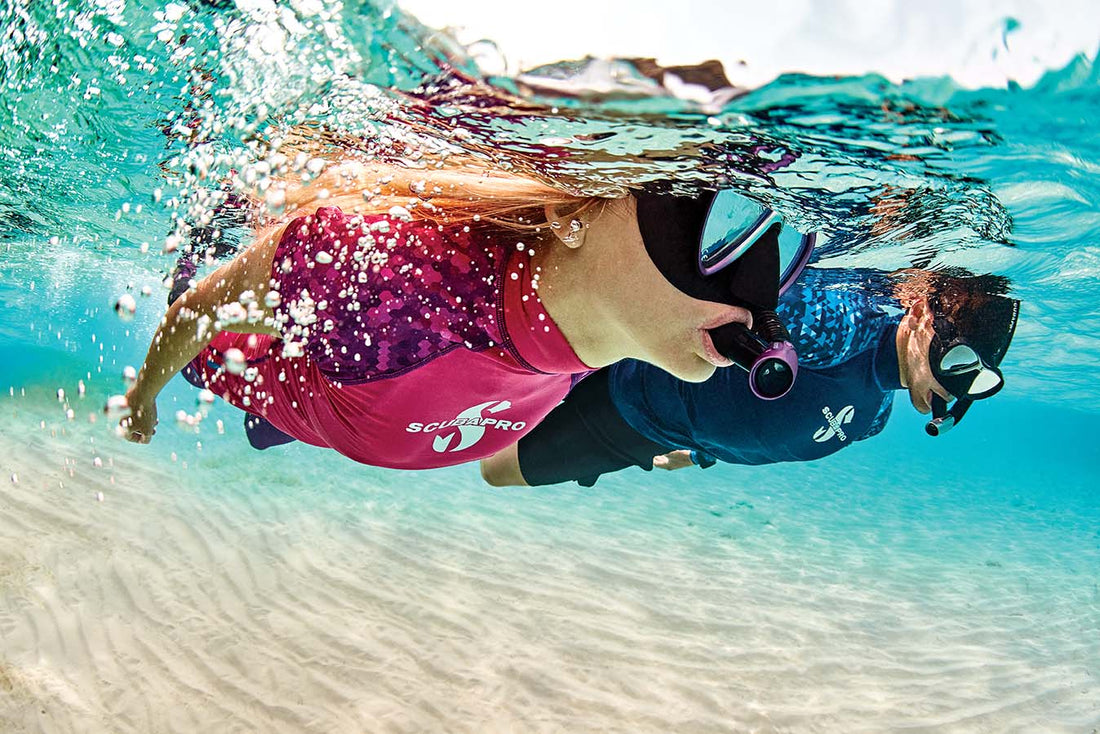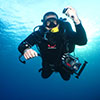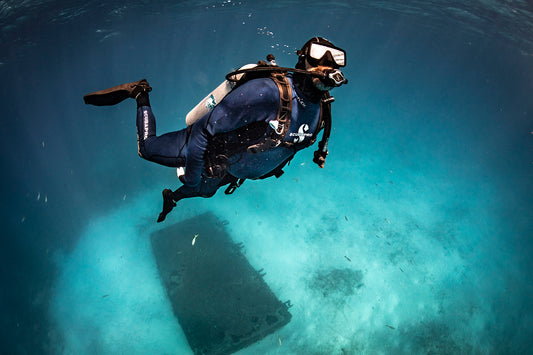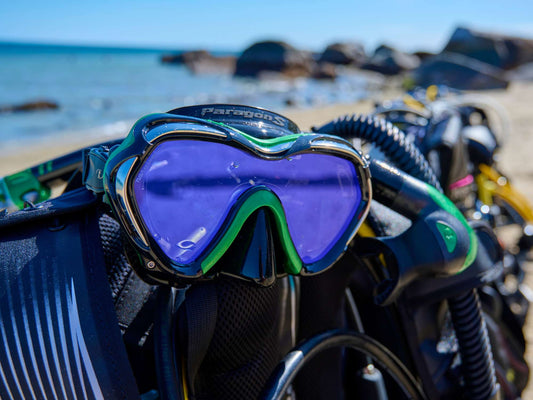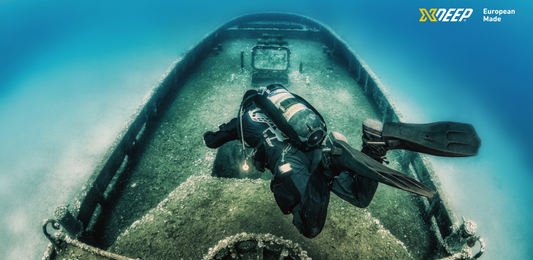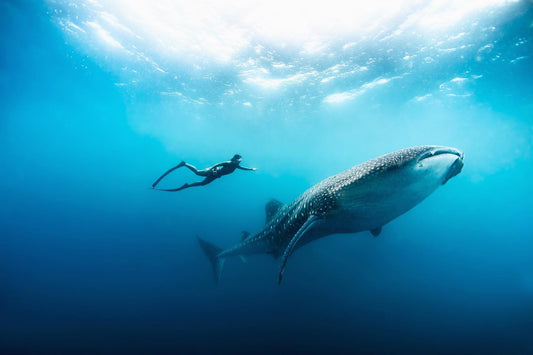Are you excited about your upcoming snorkelling adventure and wondering how it will turn out? Will it be a thrilling experience where you get to swim alongside colourful fish and explore the stunning reefs, or will it be hindered by inexperience, poor equipment, and bad advice? It's true that first-time snorkelling can be challenging, but don't let that discourage you. By keeping in mind a few simple tips, you can transform this activity into an unforgettable and enjoyable experience that will leave you yearning for more every time.
Tip No. 1 - Buy Good Quality Equipment
If you're planning to go snorkelling, it's important to have good-quality equipment to make the experience comfortable, safe, and enjoyable. The first thing you need to consider is choosing the right mask, as it's the most important piece of equipment. Don't just go for the cheapest or the most expensive one, as everyone's face is different and the same mask might not fit everyone perfectly. We have a great guide to help you choose the best mask for you, which explains the different styles and how to test for a good fit.
Another important thing to consider is anti-fog, which prevents your mask from getting foggy while you're in the water. It's easy to apply and will save you from having to stop and clear your mask while you're snorkelling.
If you can, go for a dry snorkel that has a valve at the top, which prevents water from flowing down the tube when you go beneath the surface. If that's not possible, get a snorkel with a splash guard on the end (also called semi dry snorkel), which deflects water away from the tube opening if a wave splashes over you. Both types of snorkels also have a one-way valve that allows water to drain out easily.
If you feel uncomfortable with a traditional mask and snorkel, you might want to consider an integrated mask and snorkel like the Ocean Reef Aria, which is a full-face snorkelling mask with an integrated snorkel. It provides excellent visibility and is easy to use. It is also highly recommended for anybody not comfortable with snorkel mouthpieces.
Lastly, when it comes to snorkelling fins, choose the right size that fits your feet comfortably. They come with full-foot pockets that accommodate 2-foot sizes per fin size or open-heel fins that use a stretchy strap. It's important to have a snug fit, but not too tight or loose, as your feet will become wet while snorkelling and will also shrink slightly.
Tip No. 2 - Practice First
Now that you have all your new snorkelling gear, it's important to practice in a safe and calm environment before heading out to the sea. This way, you can practice putting on your mask, finding the perfect tightness for the strap, positioning your snorkel, and getting your fins on and off. Doing all these things now will give you more confidence when you take a dip in the sea.
A swimming pool is the best place to practice as it's confined and controlled. There are no waves to knock you off balance while putting on your fins, and the side of the pool is always within reach if you need to grab it. If you don't have access to a pool, you can practice in a shallow and well-protected beach.
It's important not to just jump in head first. Take your time to get used to the water. First, put your head underwater to get a few minutes of practice breathing through your snorkel. As mammals, we have a reflex called the Mammalian Diving Reflex that causes our bodies to react automatically when immersed in cold water, especially our faces. This reflex can make us hold our breath, so take a few minutes to get used to the water and relax. While doing this, you can check that your mask isn't leaking, the strap is tight enough, and you can practice clearing water from your snorkel by exhaling hard. Be aware that at certain angles, your snorkel top will dip into the water, so avoid looking down your body towards your feet while swimming to avoid getting water in your mouth.
Once you're comfortable with your breathing, you can start fining around. Keep your legs straight and use the big muscles at the top of your legs to kick up and down rather than bending at the knee, which produces far less thrust and a lot more splashing. Use calm, controlled kicks to gently move you through the water.
Tip No. 3 - Know Your Limits
Don't feel like you have to do anything that makes you uncomfortable. If you're happy staying in the shallow part of the water instead of going out to deeper areas, that's perfectly fine. As you become more experienced, you may want to try new things, but always keep safety in mind.
Tip No. 4 - Choosing Your First Location
Before you go snorkelling for the first time, it's important to do some research and choose a good location. Look for a calm and peaceful beach to start with, as it can boost your confidence. It's better to snorkel from a beach than from a boat because jumping off a boat can be scary for some people. Choose a beach that is known for having lots of interesting marine life. Also, make sure the spot you choose is protected from big waves so that it's easier to get in and out of the water. Once you gain some experience and are comfortable using your snorkelling gear, you can start exploring more adventurous spots and excursions.
Tip No. 5 - Be Aware of the Ocean Conditions
Don't forget to take note of what is happening around you. The Ocean is alive with tidal currents and flows that can move you very quickly. Remember to keep an eye on your entry point and potential safe exit points. If you start to drift away, allow yourself enough time and energy to swim back and make a safe exit from the water. Never swim alone, and always make sure someone knows you are out snorkelling. If you are not sure get a tool that gives you tidal and weather calendar such as Garmin.
Tip No. 6 - Protect Yourself
When you go out to explore the reefs, it's important to protect yourself from the sun. Time flies when you're having fun, and it's easy to forget to cover up, which can lead to painful burns. In colder water, you might wear a wetsuit to keep warm, but in tropical waters, you'll need to wear a rash guard or a skin suit to protect your shoulders, back, and legs from the harmful UV rays. These suits are lightweight, stretchy, and quick-drying and provide better sun protection than sunscreen, which can easily wash off in the water. If you are unsure which rash guard to buy - check our Blog for more info.
Tip No. 7 - Enjoy Yourself
Always remember that you are there to enjoy yourself!
